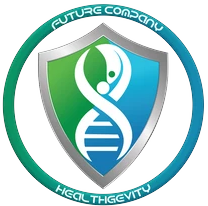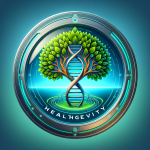-
HealthGevity Admin posted in the group Longevity
It’s time to address the elephant in the longevity room
Katerina Stroponiati on how bringing balance to the longevity ecosystem starts with a personal healthspan journey.
I got into the longevity space because I believe that the way we have approached the understanding of our body and how it works is completely unorthodox. The whole industry/research was built on curing the symptoms and prevention was not even a topic.Beyond that, one of the huge elephants in the room in the biotech space is that the male body has been considered biology’s baseline.
Until comparatively recently, scientists avoided using female animals in experiments because it was believed that hormonal fluctuations in female animals would complicate data.
However, in 2016, the National Institutes of Health (NIH) mandated the inclusion of female animals in their studies. While a step in the right direction, we have nearly a century of clinical data collected and conducted only on males. Because of this, entire systems, such as the female reproductive system, hormones, and their systemic effects, have never been thoroughly examined at a research level.
This issue persists in the longevity ecosystem today; the field is dominated by male ‘longevity gurus’. A male guru’s protocol has little to do with the female body, which may seem obvious, but many biomarkers that I track, which affect my healthspan at a systemic level, e.g., estrogen, progesterone, etc, are not as important to men’s longevity and don’t form part of the protocol. And vice versa.
Women’s longevity needs a different approach, but it is simply not a matter of male/female inequality – it’s a fundamental issue in basic science. Considering the fundamental differences between organisms, how could we assume that interventions effective in males would also work in females?
I am exposing my health data to point out the importance of prevention to achieve a greater healthspan but also how important it is for women to understand our bodies at this level and not just adopt tests and interventions from random gurus.
To achieve longer healthspan and longevity you need to start from prevention.
I started by determining my baseline in order to understand where my body stands. What is my genetic profile? Have I created any damage with my lifestyle so far? Am I aging faster than I am supposed to? If yes, what causes that? My diet? My environment? Am I over exercising and causing damage?
First things first, I was checked for suspicious tumors. What’s the point of taking NAD to boost longevity if a disease was already taking hold in my body?
I underwent a full body MRI plus a Galleri Test; this test detects 50 types of cancers through a liquid biopsy, and I followed it up with a full-body MRI , which scans all organs, from the brain to the feet, for any suspicious findings. These two tests complement each other and give a comprehensive overview.
The brain can be neglected when investigating healthspan as tests can be invasive, but brain scanning is key. It’s known that the brain shrinks with age, so checking for atrophy in specific brain regions can indicate neurodegenerative diseases, among others, and these age-related diseases warrant early intervention if detected.
My full-body MRI actually showed a possible endometrioma (a cystic lesion that stems from endometriosis). Since the endometrioma is on my ovaries it could potentially affect my fertility. That was a very important discovery, and I am lucky that I found it early because now I have a baseline, and future tests will indicate how fast it is growing or if any of my interventions are helping to reduce it.
Then I moved forward with more additional in-depth scanning, like dual energy x-ray absorptiometry (DEXA). DEXA measures bone density and is often used for diagnosing osteoporosis; it also measures skeletal muscle mass, resting metabolic rate and total body fat. While I am young enough not to be overly concerned about bone density problems, it is important to know where one stands with muscle/fat composition and how this changes with age.
I also underwent CT scanning; this is valuable for looking at organs in motion, such as the heart and lungs, and MRI can be less effective at capturing clear images of these constantly moving organs.
I also had a pelvic ultrasound and, of course, a 3D breast mammogram (my first one). Following my doctor’s advice, I will not need to repeat the mammogram next year since there were no suspicious findings. Instead, I will do the regular ultrasound.
Of course, I took a series of blood tests investigating my lipid profile, metabolism, hormones, and inflammation. This was rather challenging, too, because there is not a definition of aging biomarkers, something the industry is working on. A lack of clarity in this area means there can be more questions than answers. Which biomarkers change with age, no matter how good my lifestyle is, for example. It must also be taken into account that most of the ranges that we get from blood tests don’t consider aging; so, for example, one might measure the amino acid homocysteine and find it is within a normal range, but is this a good number based on age? Or is the pathway there deteriorating faster than it should? The industry needs to define those biomarkers that change with age, no matter how healthily we live or how good our genes are, and consider age-adjusted ranges.
User Badges
Gamipress User Balance
1665
Points
0
XPs






